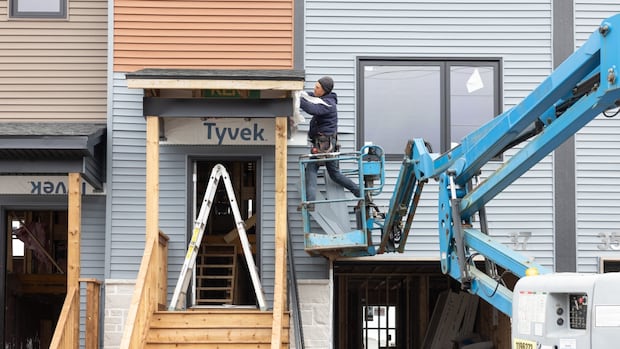[
The pace of housing construction starts in Nova Scotia needs to more than double for the next decade in order to restore affordability to pre-pandemic levels, according to a recent Canada Mortgage and Housing Corporation report.
Canada’s housing agency estimates that the province’s current rate of housing starts is about 5,400 a year. According to the report, Nova Scotia will need to average more than 12,500 starts annually between 2025 and 2035.
“We need [supply for] rental, we need home ownership, we need everything across the board,” said CMHC deputy chief economist Aled ab Iorwerth.
He said it will be a challenge to hit the housing starts needed. In the last few years, people in the construction industry have reported labour shortages that are having an impact on projects.
“It’s a stretch goal, but that’s why we need everybody [governments and the private sector] to work together on this,” ab Iorwerth said.
He said governments need to make development processes more efficient while builders and developers need to find ways to improve productivity through approaches like prefab manufacturing.
The CMHC’s latest update on housing supply gaps looks at what it would take to return house prices to being either no higher than 30 per cent of average gross household income or no higher than 2019 levels in less affordable regions.
The report’s regional breakdowns show Ontario and Nova Scotia have the most significant supply gaps by province, while Montreal faces the largest gap of any major city.
Affordable housing researcher Catherine Leviten-Reid said the type of housing we build in the future matters and isn’t something addressed in the report.
Some experts, including Leviten-Reid, have said more non-market housing like those owned by governments or non-profits is needed to ensure a more affordable housing system.
“Those providers are not profit-seeking and so they’re not going to be charging the same kind of high rents as our for-profit housing developers are,” said Leviten-Reid, an associate professor at Cape Breton University.
“Why not tackle the affordability issue by increasing supply specifically within those non-market sectors?”
Leviten-Reid added that regulations should also be considered, like vacancy control to prevent affordable apartments from being pushed to much higher market rents when new tenants move in.
Ab Iorwerth agrees more support is needed for low-income households, adding that “middle-class Canadians are also feeling the pinch and more housing is needed to get them … back to affordability.”
If Nova Scotia can ramp up housing construction, the CMHC estimates home prices could fall from an average of about $511,000 to under $406,000 by the end of 2035. Rents could be six per cent lower than where they’re currently projected to be by that time.
The CMHC has changed its target of affordability when making projections about supply gaps.
“Restoring affordability to levels last seen two decades ago isn’t realistic, especially after the post-pandemic price surge,” the report said.
It notes the new threshold of restoring affordability to pre-pandemic levels is not an official government target, but illustrates the scale of the challenge of making housing affordable.
